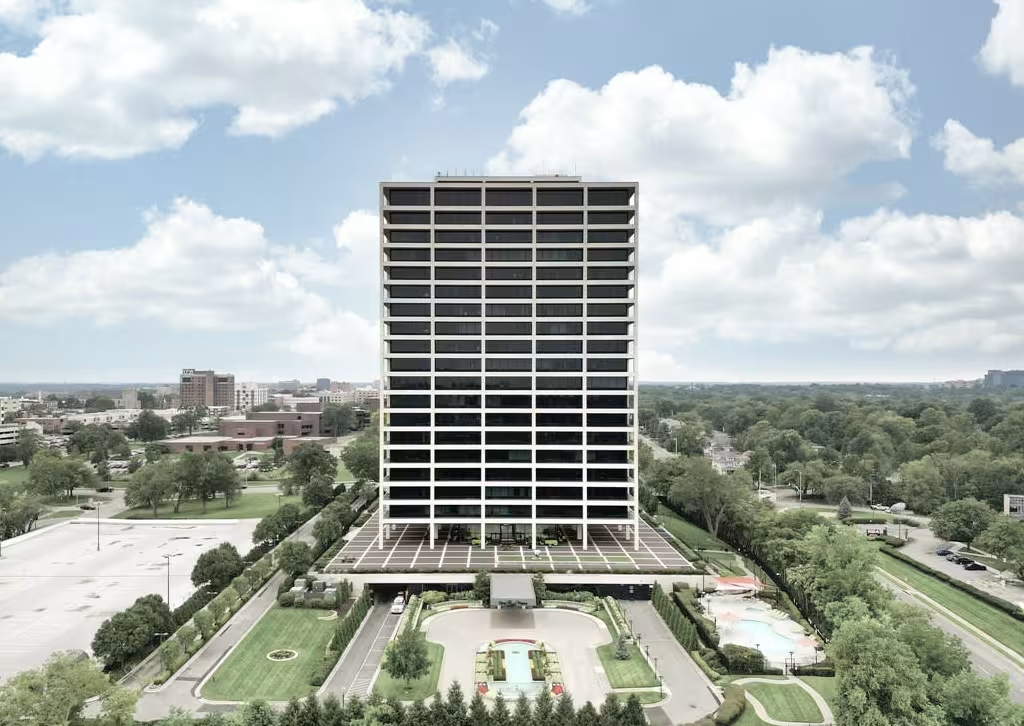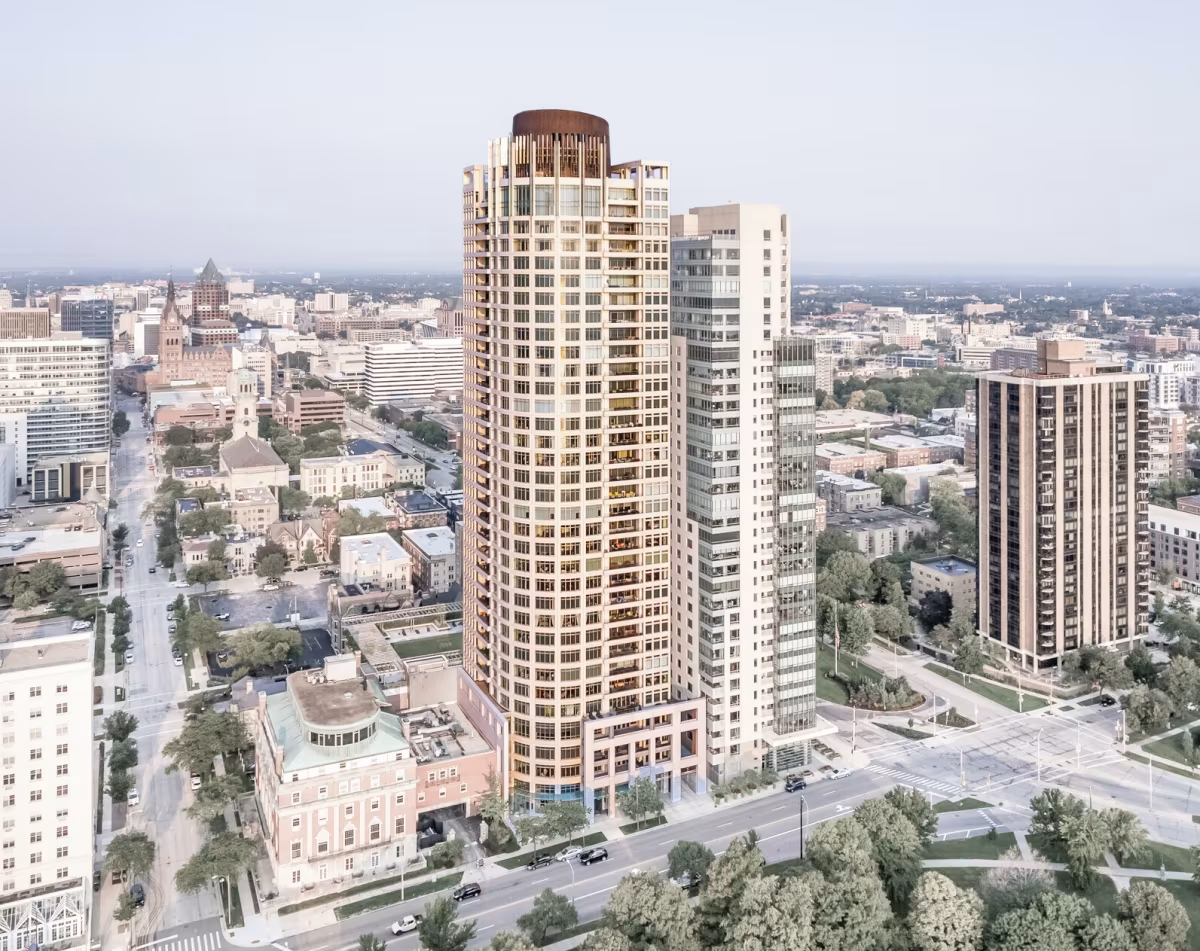BMA Tower vs University Club Tower


Comparing the BMA Tower and the University Club Tower is compelling because they were both designed by Skidmore, Owings & Merrill, yet they stand in different cities (Kansas City, MO and Milwaukee, WI), and were completed over two decades apart.
What this will allow us to see, is how the same firm's approach adapted to different places in different periods of time.
Height & Size
The University Club Tower is clearly the larger tower of the two, both in terms of height and number of floors. It rises to 446ft (136m) with 34 floors above ground, while the BMA Tower reaches 272ft (83m) with 19 floors above ground.
Of course, each project may have faced different briefs or regulatory constraints, which we don't really know about and could also explain the outcome.
Architectural Style
The BMA Tower was designed in the International Style style, while the University Club Tower reflects the principles of Contemporary.
At the time of their completion, both styles were well established. This makes the comparison especially interesting, because both buildings represent a dominant aesthetic at a particular point in time.Built 44 years apart (1963 vs 2007), these two buildings are a perfect example of how different architectural styles have shaped the architectural landscape of our cities over time.
Uses
Both the BMA Tower and the University Club Tower are primarily residential towers, serving similar roles in the urban fabric.
Originally, the BMA Tower was designed for commercial, but over time it was converted to residential. The University Club Tower by contrast has maintained its original role.
In terms of capacity, the BMA Tower offers 106 apartments, while the University Club Tower provides 53 units.
The University Club Tower also provides 106 parking spaces.
Structure & Facade
Both towers share the same structural solution, a Frame system.
A frame structure uses a grid of columns and beams to carry the building's loads. This frees the walls from structural duties, allowing for flexible floor plans and larger windows.
However, when it comes to the facade, both buildings use different approaches. The BMA Tower uses a Window Wall facade, while the University Club Tower uses a Modular facade.
A Window Wall facade like the one seen in the BMA Tower uses panels fitted between floor slabs, leaving slab edges visible, while a modular facade like the one seen in the University Club Tower employs prefabricated panels, often mixing solid surfaces with smaller windows.
| BMA Tower | University Club Tower | |
|---|---|---|
| Skidmore, Owings & Merrill | Architect | Skidmore, Owings & Merrill |
| 1961 | Construction Started | 2004 |
| 1963 | Year Completed | 2007 |
| International Style | Architectural Style | Contemporary |
| Residential | Current Use | Residential |
| 19 | Floors Above Ground | 34 |
| 83 m | Height (m) | 136 m |
| 106 | Residential Units | 53 |
| Frame | Structure Type | Frame |
| Steel | Vertical Structure Material | Reinforced Concrete |
| Concrete And Steel | Horizontal Structure Material | Reinforced Concrete |
| Yes | Facade Structural? | Yes |
| Marble, Glass | Main Facade Material | Concrete, Glass |
| Skidmore, Owings & Merrill LLP | Structural Engineer | Skidmore, Owings & Merrill |
| MO | State | WI |
| Kansas City | City | Milwaukee |
| 700 W 31st Street | Address | 825 N Prospect Ave |